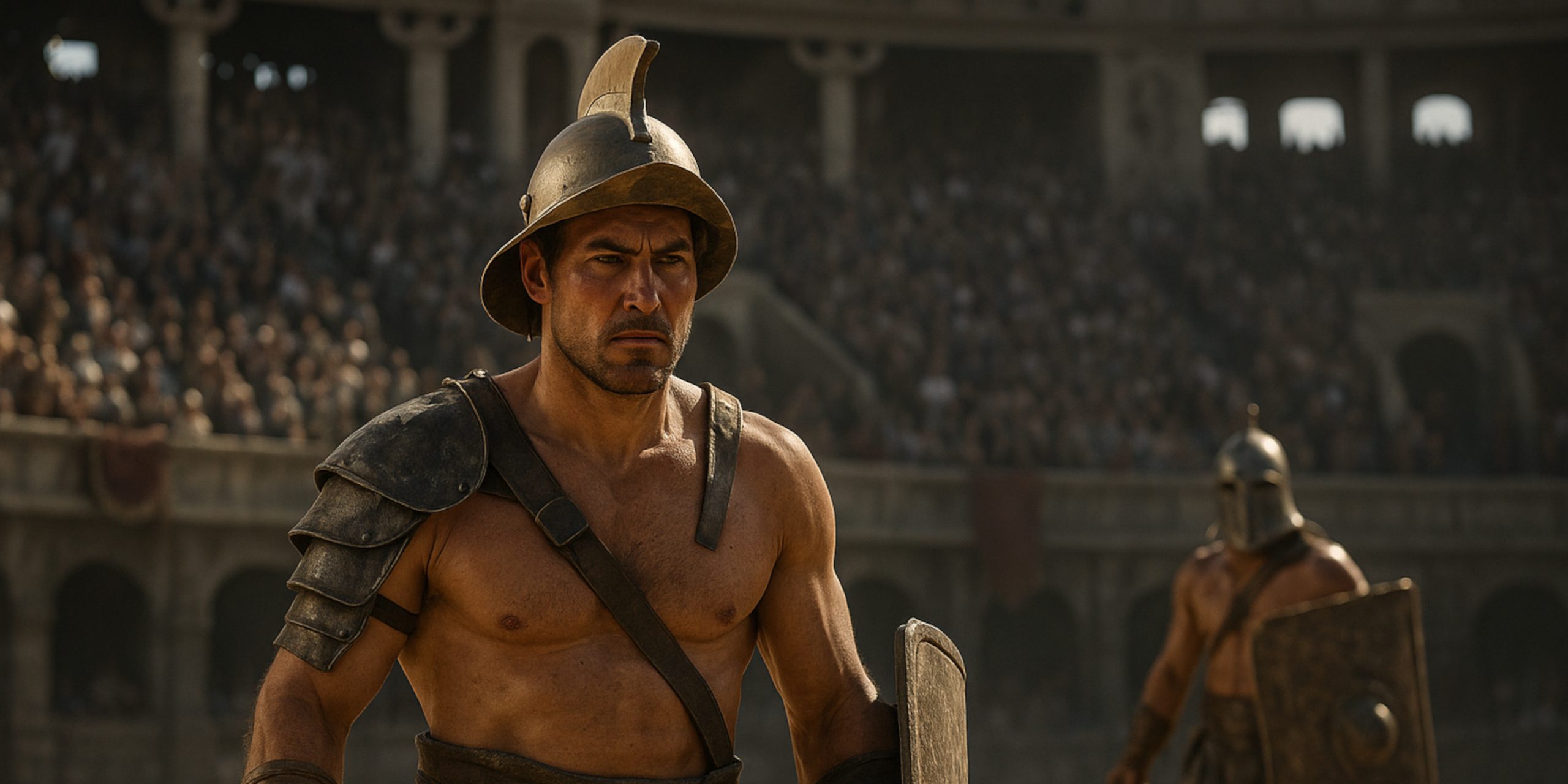
For decades, Hollywood has portrayed gladiators as bloodthirsty warriors battling to the death in arenas filled with cheering Romans. While this image has cemented itself in popular culture, it rarely matches historical reality. The truth behind Rome’s gladiatorial games is far more complex, shaped by social structures, legal frameworks, and cultural expectations that most films either distort or ignore entirely.
Gladiators Were Not Always Slaves
A persistent cinematic myth is that all gladiators were enslaved men with no agency or choice. In reality, while many were indeed slaves or prisoners of war, others entered the arena voluntarily. Known as auctorati, these men sold themselves into the profession, often for financial gain or the promise of fame. Some were even Roman citizens.
Films tend to ignore this nuance, favouring the dramatic narrative of a wronged man forced into combat. It makes for good storytelling, but reduces a layered institution into a simple morality play.
Fights Were Rarely to the Death
Perhaps the most significant distortion is the belief that every match ended in death. In truth, the training, housing, and upkeep of gladiators required significant investment from their lanista (trainer/owner). Gladiators were valuable assets, not disposable entertainment.
Most bouts followed strict rules and were overseen by referees. A match might end in surrender, with the defeated fighter raising a finger in appeal. The final decision to spare or execute a gladiator rested with the editor of the games, often influenced by the crowd’s reaction, but executions were not standard practice.
The “Thumbs Down” Misconception
Hollywood has popularised the dramatic moment of a Roman emperor giving a thumbs down to signal death. This gesture is likely inaccurate. Roman sources are ambiguous, but many historians believe pollice verso (literally “with turned thumb”) did not clearly mean what films assume. A closed fist or a covered thumb may have been the real sign for mercy.
Gladiators Weren’t Wild Brawlers
Cinematic gladiators are often shown as undisciplined brutes, swinging weapons with reckless abandon. In contrast, historical gladiators were highly trained specialists. Each type of gladiator had a defined set of arms and armour, such as the murmillo, retiarius, or secutor, each pitted strategically against another type to create a balanced and entertaining fight.
Combat was not just about brute force. It required skill, stamina, and technique. Many trained in specialised schools (ludi) under strict routines, akin to athletes.
The Arena Was Not Just About Violence
Films focus heavily on gore and spectacle, but gladiatorial games also included theatrical elements, religious ceremonies, and social rituals. The games were embedded in Rome’s political and religious life, often tied to funerals, public festivals, or displays of imperial generosity.
Executions of criminals (damnatio ad bestias), mock naval battles (naumachiae), and mythological reenactments added layers of meaning and complexity that are rarely depicted in film.
Women Also Fought
Although rarely portrayed on screen, women did participate in the arena. Known as gladiatrices, these female fighters were rare but documented. Their presence was often intended to provoke or shock the audience, challenging Roman norms about gender and decorum. By leaving them out entirely, Hollywood erases a notable facet of the games.
Spartacus Was Not the Norm
The story of Spartacus has been told and retold, often reinforcing the idea of the noble slave who rose against a corrupt empire. While rooted in truth, this narrative is exceptional. Most gladiators did not rebel. The Spartacus revolt was remarkable precisely because it was unusual and posed a serious threat to Roman authority.
By focusing on Spartacus as representative, films ignore the thousands of other gladiators who lived, fought, and died within the system without ever challenging it.
Gladiator Games Did Not Last Forever
The impression left by many films is that gladiator games were an eternal fixture of Roman culture. In fact, they reached their peak during the late Republic and early Empire, then gradually declined. By the fourth century AD, pressures from Christianity and economic strain led to their decline, with the last known games held in the 5th century.
The Seven Swords Takeaway
Hollywood’s gladiator is a construction: part athlete, part martyr, part action hero. While visually compelling, it obscures the real people behind the helmets. The truth is both more human and more complicated. Gladiators were performers, professionals, and often celebrated figures, operating in a society that saw violence and honour as tightly intertwined. What survives on screen may echo the past, but it rarely speaks for it.



